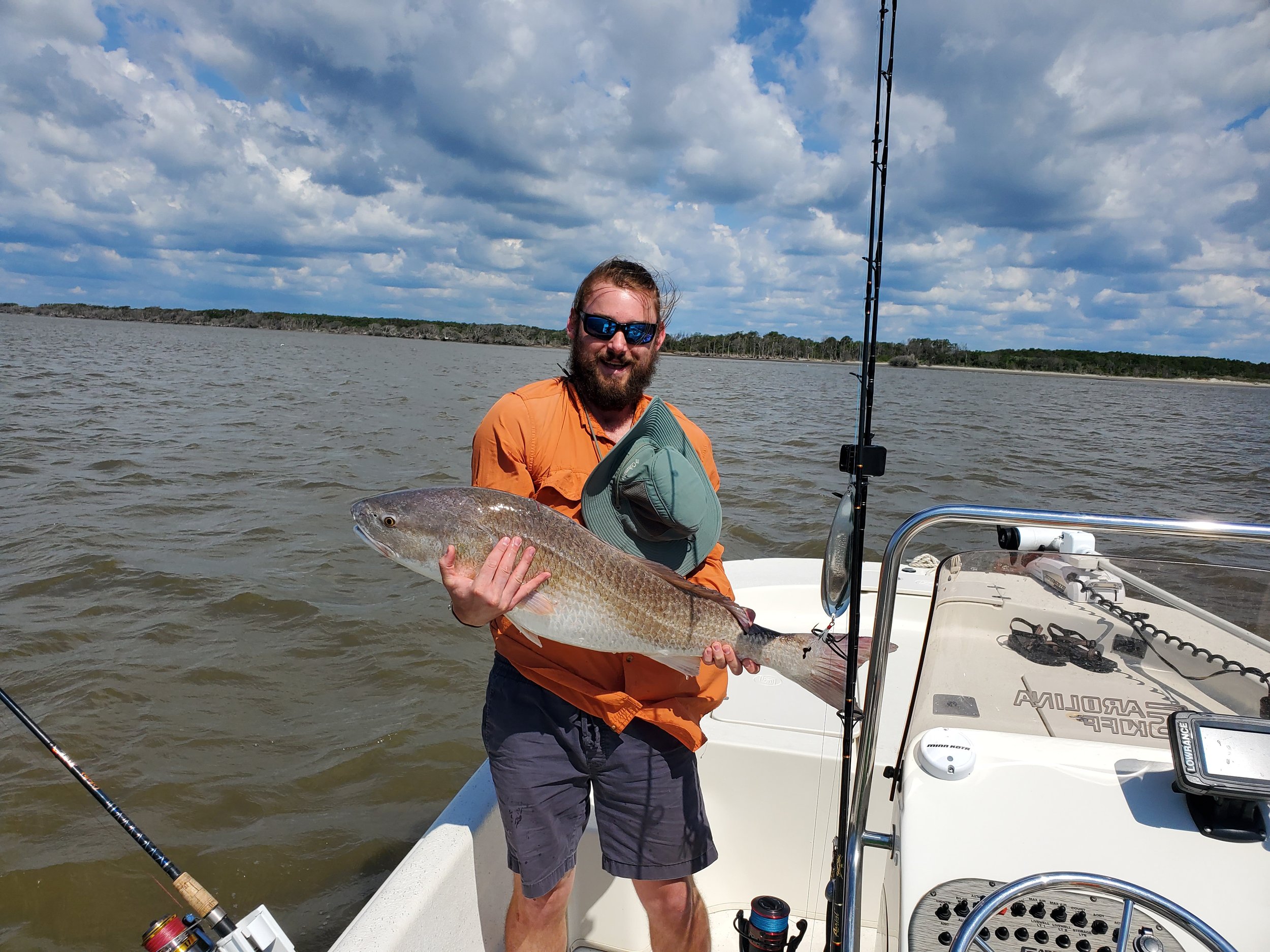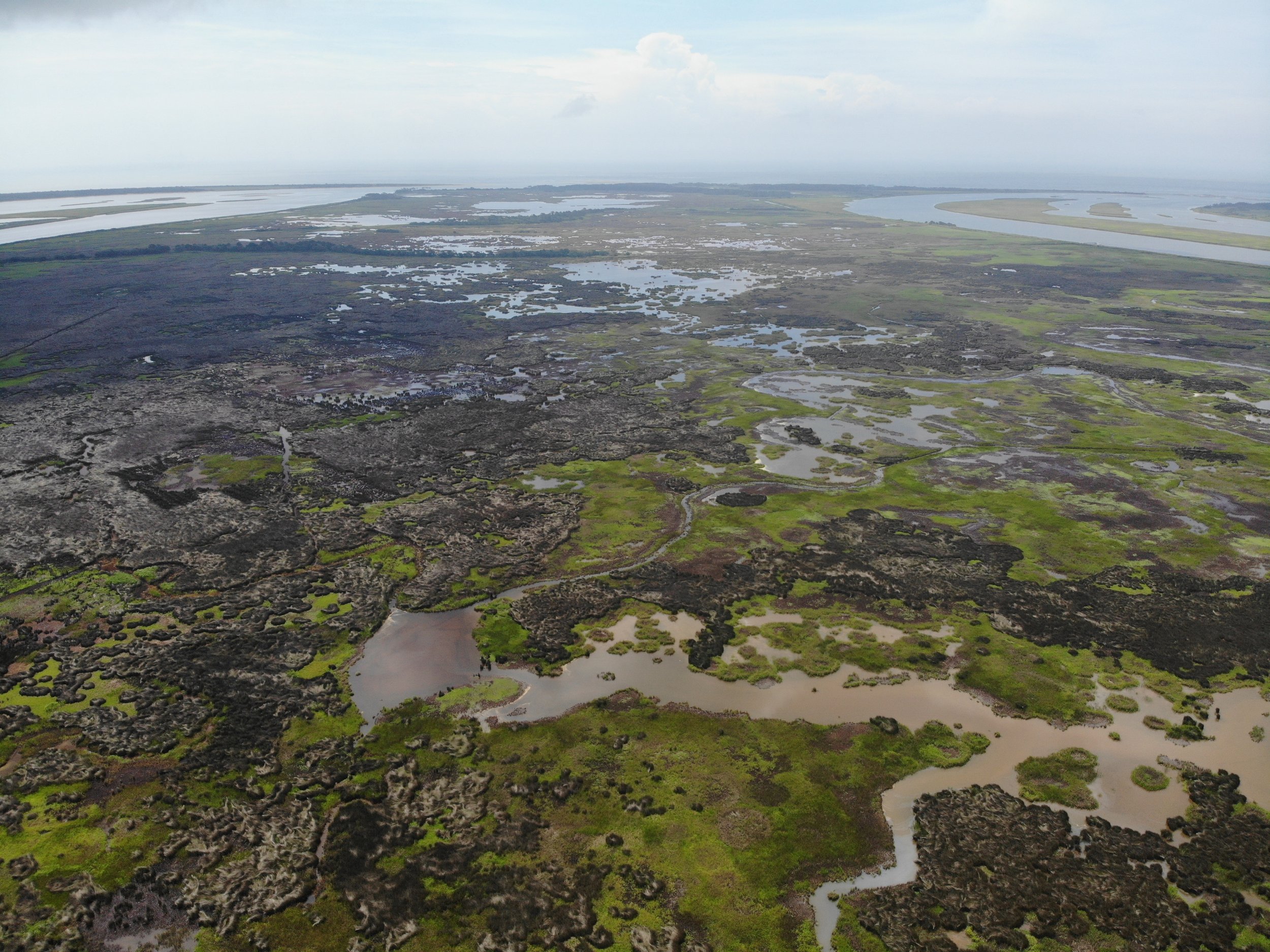
Where We Fish
FISHING CHARTERS IN GEORGETOWN
Before emptying into the Atlantic, the Waccamaw, Black, Sampit, Pee Dee, and Santee Rivers flow through and around the city of Georgetown, SC. The deltas, marshes, and bar built estuaries formed by the river's flow and tidal currents, along with the jetties built for the towns industry, make Georgetown a hotbed for any type of South Carolina saltwater fish. North Inlet, Winyah Bay, and the Santee Delta, are all excellent fisheries allowing anglers to try many different styles of fishing. Tarpon, Redfish, Spotted Seatrout, Flounder, Black Drum, Sheepshead, Shark, and many other fish, are abundant in these areas during different times of the year.
GEORGETOWN INSHORE FISHING
Tarpon, Redfish, Spotted Seatrout, Flounder, Black Drum, Sheepshead, Shark, and many other species can be found in Georgetown’s estuaries depending on the time of year. Five different nature preserves and reserves surround Georgetown, SC, covering over 65,000 acres of protected coastal habitat and showcase some of the most beautiful scenery in South Carolina. Exceptional fishing within these undeveloped preserves and reserves will create a special memory for any experienced angler.
Expert Captains: Our seasoned captains have years of experience navigating Georgetown's waters and will guide you to the best fishing spots.
Well-Maintained Vessels: Our top-notch boats are equipped with the latest safety equipment, fishing gear, and technology to ensure an enjoyable experience.
Family-Friendly Adventures: We welcome anglers of all ages and skill levels, making our charters perfect for family outings, group events, or corporate team-building activities.
Commitment to Conservation: We promote sustainable fishing practices and follow all local fishing regulations to protect our precious marine resources.
Why Choose Georgetown Fishing Charters
Getting into North Inlet from Georgetown can be a challenge if you aren't familiar with Mud Bay, but get ready for some world class fishing if you make it in. Light tackle, fly fishing, top water, the tried and true Carolina rig, and many other fishing methods work well in this enormous marsh. On certain days the water is so clear here you won't believe you're fishing in South Carolina.
Pawleys Island is a beautiful seaside community filled with southern charm and a slow pace lifestyle that leaves many tourists coming back year after year. While the town was established in 1938, Pawleys Island itself had houses on it long before in order to enjoy the seabreeze while escaping the cruel August swamp just inland of the barrier island.
Pawleys and Midway Inlets separate the island itself from the mainland portion of Pawleys. Both Inlets connect through little creeks and offer great angling opportunities. The shallow water and marshes make a perfect habitat for bait fish and shrimp, allowing Red Fish, Spotted Seatrout, Flounder, and many other species to thrive. In the Spring and Fall, surf fishing is a great option on Pawleys and Litchfield Beach. During these times, mullet migrate along the beaches bringing large Redfish and Tarpon with them. Fishing for Spotted Seatrout and Sharks is also effective during these times.
Winyah Bay is often the main attraction for fishers traveling to Georgetown. Tidal currents combine with the flows of the Pee Dee, Black, Sampit, and Waccamaw Rivers create islands, mud flats, creeks, oyster beds, marshland, and sandbars, allowing countless fishing hot spots for whatever is on your bucket list. Jetties line the mouth of Winyah and sit just above, or a few feet under the surface, creating some of the best fishing on South Carolina's coast. Rising and falling tides flow over these rock structures, carrying large schools of bait, and attracting tons of hungry sea monsters.
WINYAH BAY
Cedar Island splits the Santee River ten miles before it reaches the Atlantic. Its basin stretches as far west as Greenville, SC and as far north as Hickory, NC, creating the second largest river on the east coast. The flow of this river combined with the tide, creates two large deltas. Thousands of oyster beds, mud flats, and sand bars are hidden in this delta, creating perfect areas for large predators to wait. Tidal creeks, marshland, and small islands create the perfect environment for menhaden, mullet, and shrimp to thrive. With this amount of bait attracting large fish, your chances are high to hook into a Bull Red, Gator Trout, Doormat Flounder, or even a Megalops Atlanticus, better known as Tarpon!"






